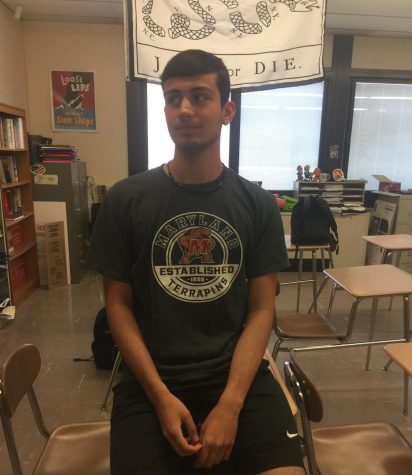
Arts and sports hold similar values, similar problems
June 20, 2018
In pop culture, arts and sports in high school are usually portrayed as vastly different realms. In film, it is common to see the bullies as ripped star athletes and the protagonists as geeky artists, introverted musicians, or pretentious actors. These films seem to say it is impossible to do both without being ostracized.
However, as someone who participates in both, I disagree wholeheartedly. In fact, sports and arts are far more connected to each other than people seem to acknowledge. On the sport side, I run track, and on the arts side, I work on the tech crew and play in the band. If doing sports and arts has taught me one thing, it’s that they operate in a similar way.
Everyone knows the differences between the two -The age old notion of sports and arts being the antithesis of each other is unfounded. Both a play and a sports team rely on teamwork. A play operating with only one person is impossible, much like a one-man sports team. Both sides have stars, yet at their heart, each is a team game. As a member of the technical sides of production for the school’s musicals, I’ve seen the tight bonds that members of Masquers develop with each other. I’ve also seen that same sense of brotherhood bloom between athletes on the track team —such camaraderie is important to maintain a positive atmosphere for the entire program.
Being a member of a sports team or an arts program means becoming a family. Some of my closest friends are in the band program, and we often work close together. Sports teams are similar as everyone is competing, trying to reach a common goal. There seems to be something about hard work that drives people together.
Hard work, however, exposes one of the shared major negatives that plague both sports and the arts: The tension that can build up and explode while working in close quarters. When disagreements arise or tempers flare, it’s easy to see. Such passions can lead to a light form of tribalism: Often times on sports teams cliques form based on skill level with the best players usually ignoring lesser players. Teams in West Essex are made of many different groups within the school and it’s quite common for cliques to start.
Throughout high school, the amount of vitriol thrown the way of less talented players is staggering. The same goes for the arts programs, specifically the Masquers program. The amount of attacks on talent and “backstabbing” between people is quite common. It can scare off newcomers or turn away talent from any team activity, whether you’re gearing up for a game or settling down for a performance.
While it is true friendships do form throughout these sports and arts, the idea of everyone being fully united is fiction. “They shouldn’t have been cast” or “I just pretend to like them because of the play” are common things that can be heard should one really dig into any high school drama program. Now replace the words “been cast” with “made the team” and you have any high school sports team. While sports teams and arts programs do act as pseudo-families, they also carry with them all the baggage of families like bitter arguments. Everyone is trying to get ahead of one another, creating a competitive atmosphere that is not altogether positive.
Both groups promise great things: improved performance in school, chances for lucrative scholarships and friendships. They aren’t these different entities, and their problems are intertwined representing the problem that large groups often create. My time as a member of both sports and arts has been valuable, but it is important to stress that neither side is perfect.
Sports and arts are portrayed differently because of history’s emphasis on physical strength over artistic abilities, but really, they’re the same at heart. Both aim to push students to their limits while providing a safe place for teens to grow. As more and more people crossover from sports into arts and vice-versa, the divides between the two will dissipate and give way to individuals who are strong—mentally and physically.
